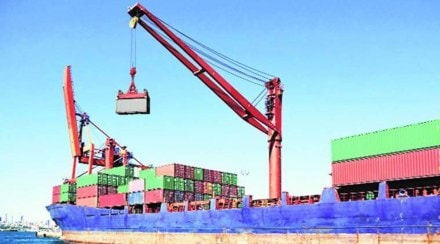Liz Truss, as the UK’s new prime minister — she will assume office on Tuesday — will likely stick to the plan of her predecessor Boris Johnson to clinch a free trade agreement (FTA) with New Delhi by Diwali in October, given that both sides have more or less concluded the negotiations already, and are equally keen to strike the deal at the earliest.
Though India is still not among the UK’s major economic partners — it accounts for barely 2% of its trade in goods and services and just 0.6% of its inward FDI stock — the scope for expansion on both these fronts are tremendous and much bigger than with any other country. Also, the FTA is seen to bring significant economic benefits to both sides rather quickly.
For Truss, who has inherited an economy with sluggish growth, addressing the intractable issues of low wages and high energy costs are paramount. She will have to rely on external trade in a big way in the medium term in battling the Brexit’s adverse effects on its economy, which is estimated at a considerable 2-2.5% of its GDP.
Also Read: Free trade talks with UK moving at fast pace, says Goyal
An ambitious target is set by both sides to raise bilateral trade in goods and services between the two countries to about $100 billion by 2030. While this looks a tall target, the FTA will definitely lead to substantial incremental growth of trade between the two countries, besides enhanced, broader economic cooperation, which would, among other things, result in much higher two-way investment flows.
The pact, which will likely be a full-fledged one (an earlier plan was to have an interim deal first), could cover more than 90% of tariff lines. Besides, it could lead to a spurt in India-UK services trade, which is currently 60% of overall annual commerce between the two countries. Johnson had agreed to a regime that will multiply visas to Indian skilled IT professionals to tide over a shortage in the UK; Truss will likely go by that plan.
The FTA encompasses a wide range of areas including tariffs, sustainable growth, product and service standards, SMEs, government procurement, data flows and intellectual property.
The sectors that are to benefit the most from the FTA are textiles, pharmaceuticals and healthcare, food & drink — including alcoholic drinks like Scotch. Plus, of course, ICT (information & communications technology) and digital services — the innovative, tech-rich future-focused industries that will drive expansion of UK-India trade.
Also Read: India Inc ready to embrace broader, new-age FTAs
Following the Russia-Ukraine war and the western sanctions on Moscow, there has been a sudden surge in India’s exports of refined petroleum products to the UK. According to data released by the UK Office of National Statistics, of India’s merchandise exports to the UK in Q1 2022, petroleum products were the single largest item, with shipments worth £888 million. This shows bilateral trade could be expanded manifold even in the short term.
India’s commerce & industry minister Piyush Goyal and his UK counterpart Anne-Marie Trevelyan have had many rounds of negotiations for the FTA. The discussions centred around opportunities to unlock the full potential of bilateral trade and opening up new areas for businesses from both the sides. Even though India-EU FTA talks are still hanging fire due to differences in areas including liquor, automobiles and intellectual property rights, the India-UK deal could be struck. On its part, the UK government has laid-out the ‘Indo-Pacific tilt’ in its foreign policy, and has made it clear that India is a key partner.
